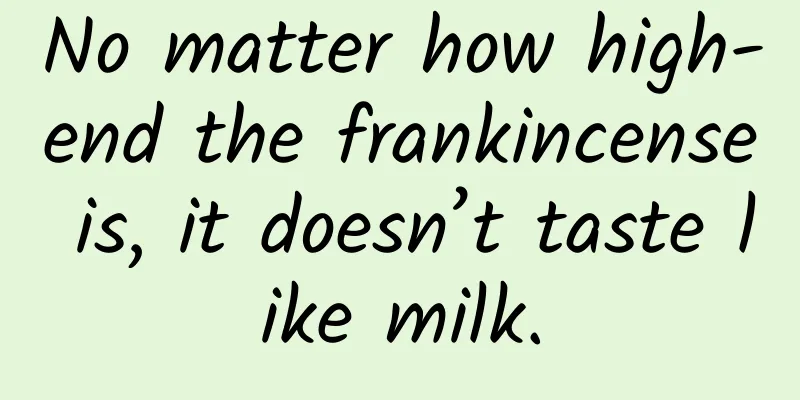No matter how high-end the frankincense is, it doesn’t taste like milk.

|
At the beginning of the narrative, let us first cast our gaze back 586 years - in that era when there were no airplanes or high-speed trains, humans placed all their imaginations of distant places on the sailing treasure ships on the sea. The ocean-going ships brought treasures from various continents and never-heard-of stories . Model of Zheng He's treasure ship in Nanjing Treasure Ship Site Park | Vmenkov / wiki commons Fei Xin, an Arabic-speaking translator who had just returned from the expedition, was compiling into a book what he had seen and heard about the exotic customs while accompanying Zheng He on his voyages to the West. A slightly tongue-twisting name in the manuscript, "Mugudushu", is particularly intriguing. Previously, this name and the city it represents had never appeared in Chinese ancient books and documents. It is the largest city in Somalia, Africa - Mogadishu . Excerpt from the Zheng He Navigation Map in Mao Yuanyi's (Ming) Wubei Zhi, with the location of Mogadishu marked in red | Wikimedia Commons The Mugu Dushu described by Fei Xin in his Xingcha Shenglan is similar to modern people's imagination. In his manuscript, he said: Mugu Dushu was a port city with stone piles as the city and stone houses. It had not rained for many years, and no grass or trees grew. The fields were barren, and even the cattle and horses could only eat dried fish. But it is such a place that produces frankincense and leopard, and ambergris can be collected by the sea. You can do business with them by using gold, silver, silk, satin, porcelain, etc. In the writings of the translator, this city in the Horn of Africa opened its veil to the East, showing its other side as an important commercial center in ancient times. Today, the Port of Mogadishu is still one of the important ports in the Horn of Africa | TSGT Perry Heimer / Wikimedia Commons Legendary Spice Frankincense, which Fei Xin specifically mentioned in the book, is a world-class legendary spice. Its long-lasting fragrance spans the East and the West, ancient and modern - from the gifts brought by the three wise men at the birth of Jesus in the Bible, to the franchised products that provided huge fiscal revenue for the Song Dynasty, to the famous perfume notes of modern times, we can see it everywhere. And Somalia is one of the main production areas of frankincense. Frankincense is named after the Old French word franc encens, which means fine incense. This spice is not derived from milk , but a resin . It is produced from several plants of the genus Boswellia in the olive family, including sacred frankincense B. sacra, serrata, papyrifera and frereana. Sacred frankincense and frereana are the main ones distributed in Somalia. Sacred Frankincense Tree | Mauro Raffaelli / Wikimedia Commons Calendar Girl's Tips Sacred frankincense B. sacra was previously considered to be two species: B. sacra, native to Oman and Yemen, and B. carteri, native to Somalia, but they are now recognized as one species. However, the ingredients and aroma of sacred frankincense from different production areas are different, so frankincense is usually marked with the production area in commodity trading. Most of the plants of the genus Frankincense grow on barren hills, and they look like potted plants growing in sand dunes . The small and thin leaves are not dense, and the flowers are also small, white at first and gradually turn light red. Inflorescence of sacred frankincense | Scott Zona / Wikimedia commons After eight to ten years of growth, the trees are ready to be harvested for their resin. The bark is cut and the tree secretes a milky white, oily resin from the wound to protect itself. This color is also the origin of the Hebrew name for frankincense, levonah, from the word lavan, which means white. Resin from the frankincense tree | Mauro Raffaelli / Wikimedia commons The resin gradually hardens when it comes into contact with air, and its color becomes slightly transparent, and finally condenses into rosin-like particles , which are frankincense. Frankincense without milky aroma Contrary to its name, the aroma of frankincense is completely different from that of milk and other dairy products. It has no "milky" smell at all , but instead has the aroma of pine and lemon citrus. This is because it contains a variety of different monoterpenes, among which α-pinene gives frankincense the aroma of pine ; more specifically, frankincense usually contains both levorotatory limonene and dextrorotatory limonene, which gives it the top notes of citrus or lemon fir . Different varieties of frankincense have different monoterpene components, but overall it is a spice with a fresh and long-lasting fragrance. Appearance of frankincense | Lupus in Saxonia / Wikimedia commons Somalia's sacred frankincense can be harvested twice a year . In the spring from February to March, people will cut the bark from the side of the frankincense tree facing the sunrise to harvest the resin; in the autumn from August to September, they will switch to the side facing the sunset. This helps the tree heal and achieves the purpose of harvesting twice at the same time. At first, the resin is small and black or amber in color. Every ten to twenty days, the wound is cut again, and the resin gradually becomes larger and whiter, with a stronger aroma. The last resin of the harvest season is often considered the best , and the price is fifteen times more expensive than the first. Generally speaking, because spring is more humid than autumn, autumn frankincense is considered better than spring. A shop selling frankincense in the bazaar | Ali Almossawi / flickr.com The harvesting period of Boswellia undulata is as long as nine months . However, although their resin products are generally called frankincense, the resin of Boswellia undulata does not contain boswellic acid . Therefore, even though they are both precious spices, Boswellia undulata is considered to be slightly inferior to other frankincense resins of the same genus in terms of "medicinal value". However, it is the oldest chewing gum raw material in the world and has a refreshing lemon flavor. In Somalia, this resin is called "maydi". Maydi Frankincense | houseoffrankincense.com What kind of frankincense is the best? Interestingly, people in different regions and eras had different standards for judging the grade of frankincense. Li Xun's "Sea Drugs Materia Medica" in the Tang Dynasty first mentioned that people at that time believed that the highest grade of frankincense was "purple and red like cherry" and "red and transparent". Hong Chu's "Incense Book" in the Northern Song Dynasty also continued this evaluation standard, "the transparent one is the best". Zhao Rushi in the Southern Song Dynasty changed this statement and developed a more complete rating standard, believing that "round and big like a finger, what is commonly known as dripping milk" is the best "jianxiang", and the gray and black color is the inferior "heita". In the crossroads in front of Zhao Taicheng's house in "Along the River During the Qingming Festival", there is a store with a sign that reads "Liu's Shangse Chentan Jianxiang", which means that the best frankincense is sold here. The incense shop in Zhang Zeduan's (Ming Dynasty) Along the River During the Qingming Festival | Zhang Zeduan Today, the evaluation standards of people in frankincense producing areas are not consistent with those of Western buyers. The highest grade "Sudanese product" of wavy frankincense in Somalia is the long, flat, golden Mushaad . For people in Oman, another famous production area of sacred frankincense, a type of frankincense with slightly smaller particles and pure white color called Silver is their favorite. Western buyers believe that the Hojari frankincense with slightly green color and large particles is the best quality. These completely different evaluation criteria may be related to the local climate and the suitability of frankincense , and also indirectly reflect the wide trade and far-reaching influence of this spice around the world. Green Hojari frankincense | houseoffrankincense.com However, wars and crises have not stopped the trade in this wonderful aroma. For many impoverished Somalians, collecting frankincense is an important source of income, but mines laid during the wars in Somalia and Ethiopia have made it impossible to harvest frankincense. Reduced rainfall due to climate change , coupled with the forced overharvesting, is making the sustainability of frankincense trees even worse. These trees, which have accompanied people through a long history of civilization , are now facing unprecedented threats . Will people still be able to smell the fresh fragrance that Fei Xin smelled when he stepped on the wooden bone bundle 500 years ago? Author:antares Editor: Old Cat This article comes from the Species Calendar, welcome to forward If you need to reprint, please contact [email protected] |
<<: "Avatar 2" is released! The story behind the movie is really "terrifying"!
>>: Science Experiment Diary | The "stupid bird" that only knows how to drink water
Recommend
Banners, patches, information streams... Among so many advertising formats, which one is more efficient?
In recent years, programmatic advertising has bec...
Introduction to placing Wenchang Tower for people born in the Year of the Pig in 2020
Introduction to placing Wenchang Tower for people...
Unlocking new ways to enjoy smart travel, Volvo Cars debuts its new XC60 at the Shanghai Auto Show
Volvo Cars unlocks new ways to enjoy smart mobili...
How to enjoy the big screen treatment of mobile games? Lebo Game Hall gives you fun
With the advent of the smartphone era, in additio...
PMS APP installation process analysis
PMS (PackageManagerService) is the core of the An...
The most searched! Angered the entire Internet
Yesterday (18th), Topic: "Is it illegal to f...
Zhao Honglin - A Hundred-part Introduction to the Chaos Theory
Zhao Honglin - Introduction to the resources of t...
How to attract customers through Taobao? Teach you how to quickly add 5,000 WeChat friends?
Dear Taobao friends, if you are still worried abo...
Shooting tips for promoting the TikTok videos that have generated tens of millions of hits!
Our team has recently observed many popular video...
IDC: China's medical cloud infrastructure service market size will reach RMB 7.01 billion in 2022, a year-on-year increase of 44.6%
China's medical cloud is in a period of rapid...
How much does it cost to join the Haibei flash sale mini program? What is the price for joining Haibei’s flash sale mini program?
How much does it cost to join Haibei’s flash sale...
Practical examples: one article explains user growth in detail! !
The concept of User Growth (UG) originated from t...
I have summarized 2 experiences from the "Limited Free Class" fission activity
Event Background During this year's Spring Fe...
Elvis Presley's grandson shot himself, and the police are investigating the reason!
[Elvis Presley's grandson shot himself] Accor...
Japan has an outbreak of "man-eating bacteria" infection with a mortality rate of up to 30%. Do bacteria really eat people?
"A new deadly infectious disease with a high...









